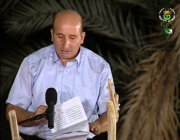Khama R, Belakroum R, Kerboua Y.
Détermination d’une courbe d’adsorption du béton de la fibre de palmier dattier (BFPD) par la méthode gravimétrique, in
3èmes Journées d'études nationales de mécanique. Ouargla, Algérie: Département de Génie mécanique - Université Kasdi Merbah Ouargla ; 2015.
Bennamoun L, Khama R, Léonard A.
Convective drying of a single cherry tomato: Modeling and experimental study. Food and Bioproducts Processing [Internet]. 2015;(94) :114-123.
Publisher's VersionAbstract
The behavior of peeled and unpeeled cherry tomatoes was investigated during forced convective drying. The study showed that the drying process highly alters the shape of the samples. This alteration (shrinkage) was examined using a non-destructive X-ray microtomography imaging technique. For both cases (peeled and unpeeled tomatoes), the volume of the sample decreased linearly with its moisture content. Furthermore, the effects of the operating air temperature as well as the peel on the drying curves were explored. Accordingly, increasing the air temperature deceased drying time from 1200 ks at 50 °C to 500 ks at 70 °C for the unpeeled sample and from 80 ks at 60 °C to 50 ks at 70 °C for the peeled sample. The effect of the peel was substantial as the drying time of the unpeeled sample was 5–10 times higher than that of the peeled sample. Based on the analytical solution of the diffusion model, a moisture diffusion coefficient was determined using two approaches. The first approach used a graphical representation and the moisture diffusion coefficient was directly deduced from the trend line of the curves. For the second approach, a correction factor was introduced into the analytical solution and the modeling results showed that the moisture diffusion coefficient was varying with the moisture content of the tested material. The comparison between the experimental data and the modeling results using the two approaches showed that the second approach, which included the effect of shrinkage, was more suitable for predicting the variations of the drying curves for the different operating conditions and for both peeled and unpeeled tomatoes. Using this second approach, the moisture diffusion coefficient for the unpeeled tomato was 2.0 × 10−11 m2/s at 50 °C and 3.5 × 10−11 m2/s at 70 °C. Similarly, the maximum values of the moisture diffusion coefficient for the peeled tomato varied from 3.0 × 10−10 m2/s at 50 °C to 5.0 × 10−10 m2/s at 70 °C. Moreover, performing modeling while neglecting shrinkage resulted in an over estimation of the moisture diffusion coefficient. In addition, operating conditions, dimensions of the samples and shrinkage had a direct effect on the external mass transfer coefficient.
Keywords : Forced convection; Moisture diffusivity; Mass transfer coefficient; Drying temperature; Shrinkage; Diffusion model.









